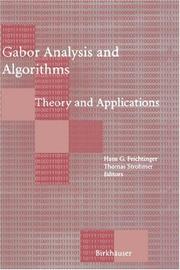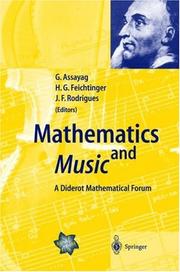| Listing 1 - 10 of 16 | << page >> |
Sort by
|
Book
ISBN: 9783631561782 3631561784 Year: 2007 Volume: 18 Publisher: Frankfurt am Main : Lang,
Abstract | Keywords | Export | Availability | Bookmark
 Loading...
Loading...Choose an application
- Reference Manager
- EndNote
- RefWorks (Direct export to RefWorks)
Book
ISBN: 9783631738580 3631738587 9783631738627 9783631738634 9783631738641 Year: 2018 Volume: 36 Publisher: Berlin Peter Lang
Abstract | Keywords | Export | Availability | Bookmark
 Loading...
Loading...Choose an application
- Reference Manager
- EndNote
- RefWorks (Direct export to RefWorks)
276 =71 AUGUSTINUS:1 --- 276 =71 AUGUSTINUS:1 Latijnse patrologie-:-Filosofie. Psychologie--AUGUSTINUS --- 276 =71 AUGUSTINUS:1 Patrologie latine-:-Filosofie. Psychologie--AUGUSTINUS --- Latijnse patrologie-:-Filosofie. Psychologie--AUGUSTINUS --- Patrologie latine-:-Filosofie. Psychologie--AUGUSTINUS --- 276 =71 AUGUSTINUS:233 --- 276 =71 AUGUSTINUS:233 Latijnse patrologie-:-De mens. Theologische antropologie--AUGUSTINUS --- 276 =71 AUGUSTINUS:233 Patrologie latine-:-L'homme. Anthropologie theologique--AUGUSTINUS --- Latijnse patrologie-:-De mens. Theologische antropologie--AUGUSTINUS --- Patrologie latine-:-L'homme. Anthropologie theologique--AUGUSTINUS
Book
ISBN: 3631738625 3631738633 Year: 2017 Publisher: Frankfurt am Main : Peter Lang,
Abstract | Keywords | Export | Availability | Bookmark
 Loading...
Loading...Choose an application
- Reference Manager
- EndNote
- RefWorks (Direct export to RefWorks)
Die Begriffe Bild und Bildung spielen bei Augustin eine wichtige Rolle, ja sie prägen sein Denken. Augustins Auffassung vom Menschen als Bild Gottes hat in späterer Philosophie und Theologie großen Einfluss. Der Autor untersucht drei zusammenhängende Fragen: Was ist ein Bild für Augustin? Wie versteht er die Aussage, dass der Mensch (als bzw. nach dem) Bild Gottes (geschaffen) ist? Wie gestaltet sich gelungene, umfassende Bildung, verstanden als Wiederherstellung und Vervollkommnung des (beschädigten) Bildes Gottes im Menschen? Die Studie betrachtet alle dafür einschlägigen Schriften Augustins, besonders die philosophischen Dialoge, Genesis-Kommentare, De trinitate und De civitate Dei, De doctrina christiana, sowie katechetische und homiletische Werke.
Education (Christian theology) --- Education --- Religious aspects. --- Augustine,

ISBN: 0817639594 3764339594 146127382X 1461220165 9780817639594 Year: 1998 Publisher: Boston, MA Basel Berlin : Birkhäuser,
Abstract | Keywords | Export | Availability | Bookmark
 Loading...
Loading...Choose an application
- Reference Manager
- EndNote
- RefWorks (Direct export to RefWorks)
In his paper Theory of Communication [Gab46], D. Gabor proposed the use of a family of functions obtained from one Gaussian by time-and frequency shifts. Each of these is well concentrated in time and frequency; together they are meant to constitute a complete collection of building blocks into which more complicated time-depending functions can be decomposed. The application to communication proposed by Gabor was to send the coeffi cients of the decomposition into this family of a signal, rather than the signal itself. This remained a proposal-as far as I know there were no seri ous attempts to implement it for communication purposes in practice, and in fact, at the critical time-frequency density proposed originally, there is a mathematical obstruction; as was understood later, the family of shifted and modulated Gaussians spans the space of square integrable functions [BBGK71, Per71] (it even has one function to spare [BGZ75] . . . ) but it does not constitute what we now call a frame, leading to numerical insta bilities. The Balian-Low theorem (about which the reader can find more in some of the contributions in this book) and its extensions showed that a similar mishap occurs if the Gaussian is replaced by any other function that is "reasonably" smooth and localized. One is thus led naturally to considering a higher time-frequency density.
Signal processing --- Image processing --- Algorithms --- Gabor transforms --- Digital techniques --- Mathematics --- Applied mathematics. --- Engineering mathematics. --- Signal processing. --- Image processing. --- Speech processing systems. --- Functional analysis. --- Applications of Mathematics. --- Signal, Image and Speech Processing. --- Mathematical and Computational Engineering. --- Functional Analysis. --- Functional calculus --- Calculus of variations --- Functional equations --- Integral equations --- Computational linguistics --- Electronic systems --- Information theory --- Modulation theory --- Oral communication --- Speech --- Telecommunication --- Singing voice synthesizers --- Pictorial data processing --- Picture processing --- Processing, Image --- Imaging systems --- Optical data processing --- Processing, Signal --- Information measurement --- Signal theory (Telecommunication) --- Engineering --- Engineering analysis --- Mathematical analysis --- Algorithms. --- Gabor transforms. --- Mathematics. --- Transforms, Gabor --- Fourier transformations --- Algorism --- Algebra --- Arithmetic --- Foundations --- Fourier, Analyse de --- Signal processing - Digital techniques - Mathematics --- Image processing - Digital techniques - Mathematics --- Theorie du signal
Book
ISBN: 9783540682660 Year: 2008 Publisher: Berlin Springer-Verlag
Abstract | Keywords | Export | Availability | Bookmark
 Loading...
Loading...Choose an application
- Reference Manager
- EndNote
- RefWorks (Direct export to RefWorks)
Book
ISBN: 3540682686 354068266X Year: 2008 Publisher: Berlin, Germany : Springer,
Abstract | Keywords | Export | Availability | Bookmark
 Loading...
Loading...Choose an application
- Reference Manager
- EndNote
- RefWorks (Direct export to RefWorks)
Pseudo-differential operators were initiated by Kohn, Nirenberg and Hörmander in the sixties of the last century. Beside applications in the general theory of partial differential equations, they have their roots also in the study of quantization first envisaged by Hermann Weyl thirty years earlier. Thanks to the understanding of the connections of wavelets with other branches of mathematical analysis, quantum physics and engineering, such operators have been used under different names as mathematical models in signal analysis since the last decade of the last century. The volume investigates the mathematics of quantization and signals in the context of pseudo-differential operators, Weyl transforms, Daubechies operators, Wick quantization and time-frequency localization operators. Applications to quantization, signal analysis and the modern theory of PDE are highlighted.
Pseudodifferential operators --- Mathematics. --- Math --- Science --- Operators, Pseudodifferential --- Pseudo-differential operators --- Operator theory --- Differential equations, partial. --- Operator theory. --- Fourier analysis. --- Numerical analysis. --- Quantum theory. --- Partial Differential Equations. --- Operator Theory. --- Approximations and Expansions. --- Fourier Analysis. --- Numerical Analysis. --- Quantum Physics. --- Quantum dynamics --- Quantum mechanics --- Quantum physics --- Physics --- Mechanics --- Thermodynamics --- Mathematical analysis --- Analysis, Fourier --- Functional analysis --- Partial differential equations --- Partial differential equations. --- Approximation theory. --- Quantum physics. --- Theory of approximation --- Functions --- Polynomials --- Chebyshev systems
Book
ISBN: 3795415802 9783795415808 Year: 2003 Publisher: Regensburg Schnell und Steiner
Abstract | Keywords | Export | Availability | Bookmark
 Loading...
Loading...Choose an application
- Reference Manager
- EndNote
- RefWorks (Direct export to RefWorks)
#GOSA:II.P.AU.1 --- #GOSA:II.P.AU.3 --- #GOSA:II.P.AM.M --- #GOSA:II.P.HI.M --- #GOSA:II.P.GR-M.M --- Ambrosius ep. Mediolanensis --- Gatz, Erin --- Hieronymus presb. --- Augustinus ep. Hipponensis --- Gregorius Magnus p.
Book

ISBN: 3030052109 3030052095 Year: 2019 Publisher: Cham : Springer International Publishing : Imprint: Birkhäuser,
Abstract | Keywords | Export | Availability | Bookmark
 Loading...
Loading...Choose an application
- Reference Manager
- EndNote
- RefWorks (Direct export to RefWorks)
The chapters in this volume are based on talks given at the inaugural Aspects of Time-Frequency Analysis conference held in Turin, Italy from July 5-7, 2017, which brought together experts in harmonic analysis and its applications. New connections between different but related areas were presented in the context of time-frequency analysis, encouraging future research and collaborations. Some of the topics covered include: • Abstract harmonic analysis, • Numerical harmonic analysis, • Sampling theory, • Gabor analysis, • Time-frequency analysis, • Mathematical signal processing, • Pseudodifferential operators, and • Applications of harmonic analysis to quantum mechanics. Landscapes of Time-Frequency Analysis will be of particular interest to researchers and advanced students working in time-frequency analysis and other related areas of harmonic analysis.
Fourier analysis. --- Operator theory. --- Differential equations, partial. --- Harmonic analysis. --- Fourier Analysis. --- Operator Theory. --- Partial Differential Equations. --- Abstract Harmonic Analysis. --- Analysis, Fourier --- Mathematical analysis --- Analysis (Mathematics) --- Functions, Potential --- Potential functions --- Banach algebras --- Calculus --- Mathematics --- Bessel functions --- Fourier series --- Harmonic functions --- Time-series analysis --- Partial differential equations --- Functional analysis --- Partial differential equations. --- Differential equations. --- Differential Equations. --- 517.91 Differential equations --- Differential equations

ISBN: 3540437274 Year: 2002 Publisher: Berlin : Springer,
Abstract | Keywords | Export | Availability | Bookmark
 Loading...
Loading...Choose an application
- Reference Manager
- EndNote
- RefWorks (Direct export to RefWorks)
Music --- Mathematics
Digital

ISBN: 9783030052102 Year: 2019 Publisher: Cham Springer International Publishing, Imprint: Birkhäuser
Abstract | Keywords | Export | Availability | Bookmark
 Loading...
Loading...Choose an application
- Reference Manager
- EndNote
- RefWorks (Direct export to RefWorks)
The chapters in this volume are based on talks given at the inaugural Aspects of Time-Frequency Analysis conference held in Turin, Italy from July 5-7, 2018, which brought together experts in harmonic analysis and its applications. New connections between different but related areas were presented in the context of time-frequency analysis, encouraging future research and collaborations. Some of the topics covered include: • Abstract harmonic analysis, • Numerical harmonic analysis, • Sampling theory, • Gabor analysis, • Time-frequency analysis, • Mathematical signal processing, • Pseudodifferential operators, and • Applications of harmonic analysis to quantum mechanics. Landscapes of Time-Frequency Analysis will be of particular interest to researchers and advanced students working in time-frequency analysis and other related areas of harmonic analysis.
Operator theory --- Harmonic analysis. Fourier analysis --- Partial differential equations --- Differential equations --- Mathematical analysis --- Fourieranalyse --- differentiaalvergelijkingen --- analyse (wiskunde) --- Fourierreeksen --- mathematische modellen --- wiskunde
| Listing 1 - 10 of 16 | << page >> |
Sort by
|

 Search
Search Feedback
Feedback About UniCat
About UniCat  Help
Help News
News